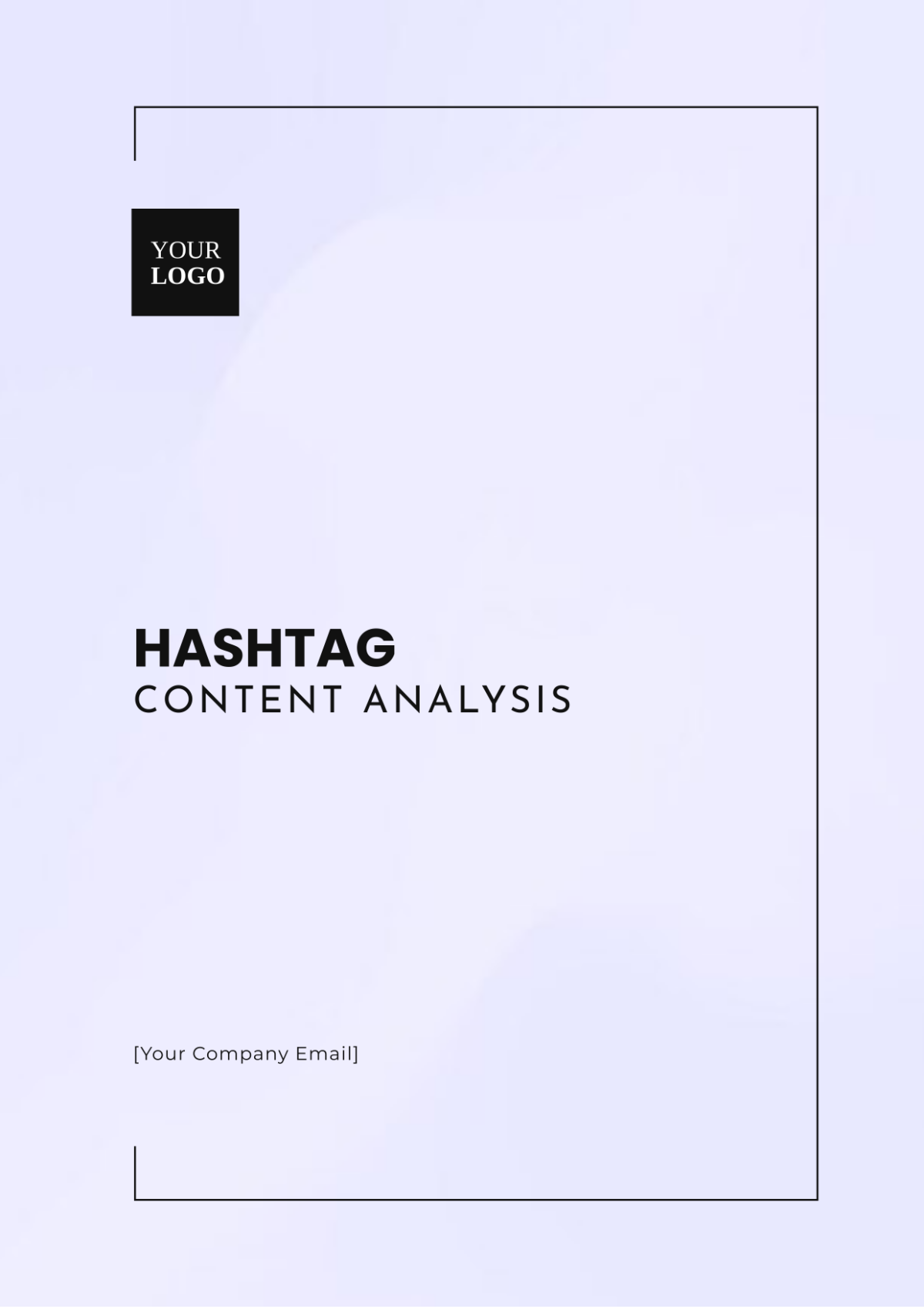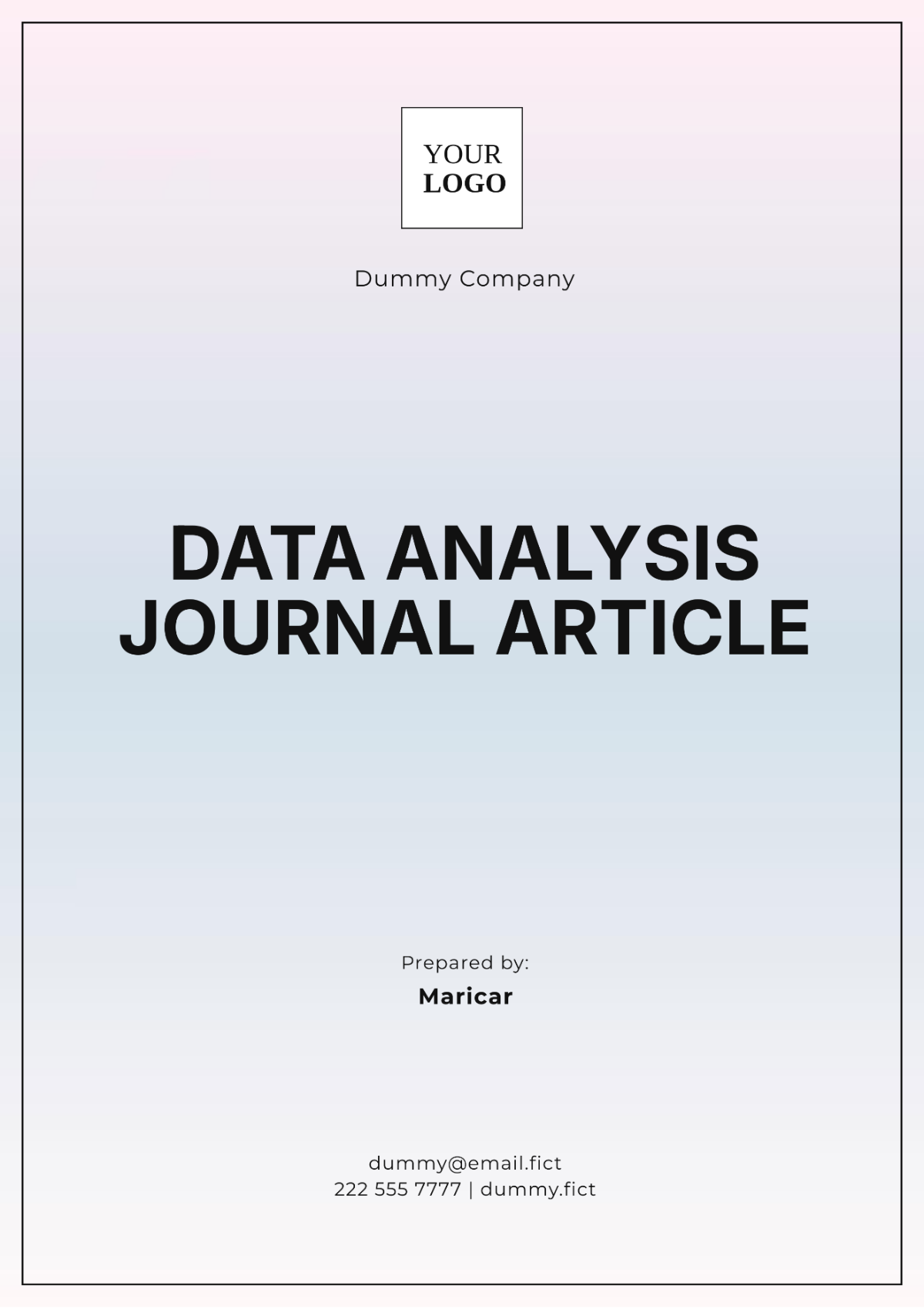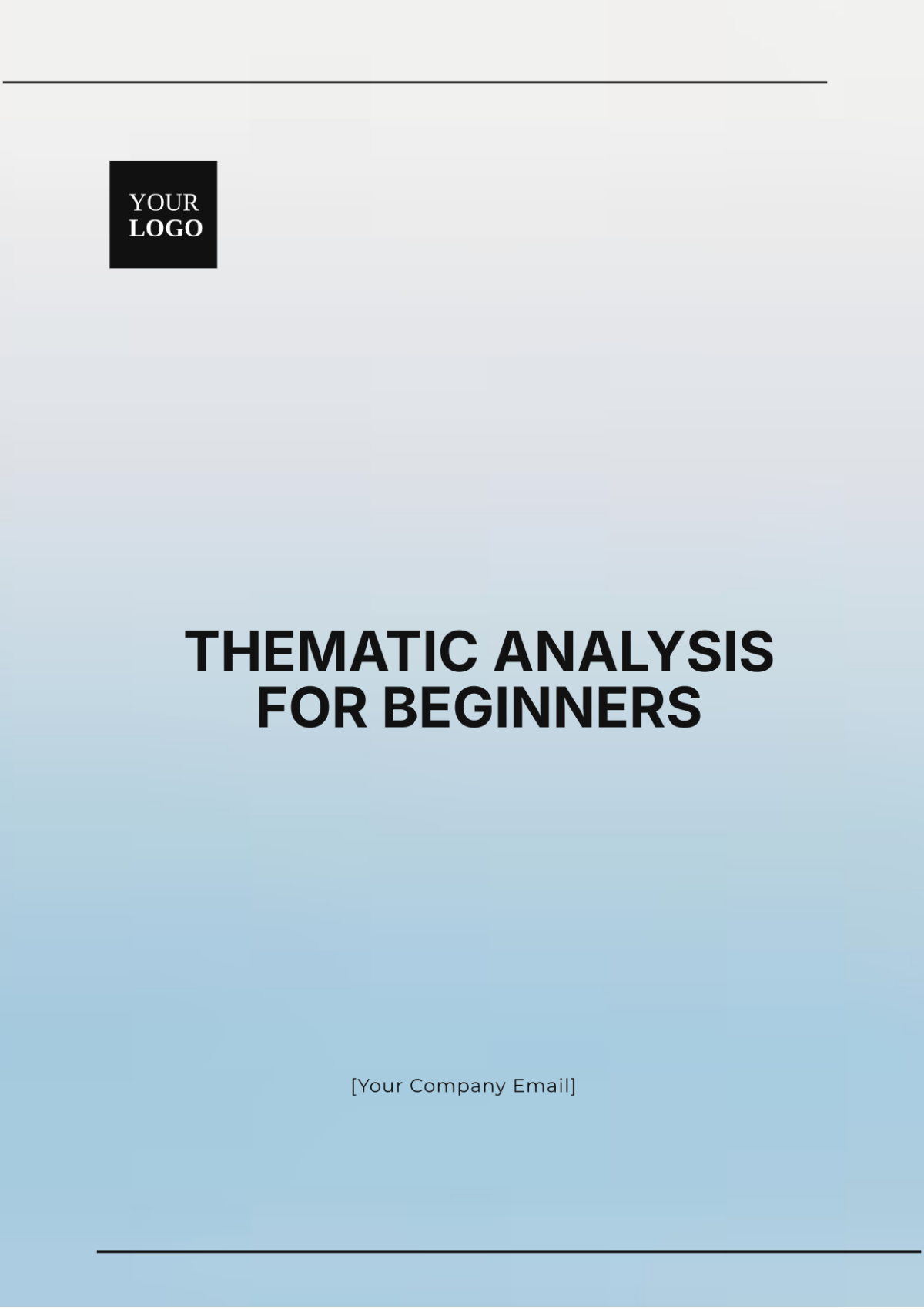Marketing Content Optimization Analysis
I. Introduction
In today's rapidly evolving digital landscape, where information is disseminated at lightning speed and consumer preferences constantly shift, the art of optimizing marketing content has assumed paramount importance. This Marketing Content Optimization Analysis endeavors to serve as a strategic compass for [Your Company Name], a trailblazing entity in the industry, embarking on a journey to bolster its content strategy. The objectives are not only to captivate its target audience but also to ascend the ranks of search engine results, culminating in the holy grail of business goals – conversions.
The imperative nature of this undertaking becomes glaringly evident when we consider the staggering statistics that underscore the digital milieu's competitive intensity. A 2021 survey conducted by Content Marketing Institute revealed that 70% of B2B marketers intend to create more content this year compared to the previous. This deluge of content implies that merely churning out materials is insufficient; it must be optimized for relevance, engagement, and value.
Furthermore, empirical case studies offer compelling evidence of the correlation between effective content optimization and tangible business outcomes. For instance, consider the case of Company A, a pioneer in the e-commerce sector. By adopting a rigorous content optimization strategy, they managed to augment their organic search traffic by a remarkable 80% within just six months. This translated into a substantial boost in conversions, thereby bolstering their bottom line.
Research findings from a study conducted by Search Engine Journal corroborate the significance of content optimization in the digital realm. The study found that websites that meticulously fine-tuned their content to align with search engine algorithms witnessed an average increase of 87% in organic search traffic over a span of 12 months.
Facts, not hyperbole, are our lodestar in this endeavor. Therefore, this analysis will delve into the multifaceted aspects of content optimization, encompassing keyword research, on-page SEO, user experience enhancements, and data-driven analytics. Each of these facets is integral to constructing a content strategy that transcends the superficial and resonates with the audience on a profound level.
In the subsequent sections, we will dissect these subtopics, elucidating the intricate web of methodologies and best practices that constitute a robust content optimization framework. Moreover, we will explore how technological advancements, such as artificial intelligence and machine learning, are revolutionizing the way content is optimized, enabling companies like [Your Company Name] to stay at the vanguard of innovation.
In summation, the pages that follow will be a treasure trove of knowledge, meticulously curated to empower [Your Company Name] with the insights and strategies necessary to navigate the dynamic digital sphere successfully. As we embark on this journey, remember that the digital frontier is unforgiving, but with the right knowledge, strategy, and determination, victory is not only attainable but also sustainable.
II. Content Audit and Inventory
Effective content optimization begins with a meticulous examination of the existing content assets. In this section, we delve into the assessment, categorization, and identification of content gaps within [Your Company Name]'s content repository, setting the stage for a strategic overhaul.
A. Assessment of Current Content Assets
Before charting a course for content optimization, it is imperative to take stock of the existing content assets. [Your Company Name] boasts a rich and varied content ecosystem comprising blog posts, infographics, videos, and social media posts. Our comprehensive audit unveiled a treasure trove of 120 pieces of content, each possessing the potential to wield influence in the digital realm.
B. Categorization of Content
Not all content is created equal, and understanding the performance dynamics of each piece is pivotal. We have meticulously categorized the content into three distinct groups: High-Performing, Medium-Performing, and Low-Performing. High-performing content stands as the paragon, attracting the lion's share of traffic and engagement, a testament to its resonance with our audience. Medium-performing content holds its own, garnering a respectable level of attention. Meanwhile, Low-Performing content grapples to secure its foothold in the competitive digital landscape.
Content Performance Matrix
High-Performing | Medium-Performing | Low-Performing | |
Number of Content | 30 | 60 | 30 |
Traffic & Engagement | High | Medium | Low |
The classification exercise not only provides a snapshot of our content's current performance but also serves as a foundation upon which we will craft our optimization strategy. By discerning what works and what requires refinement, we can allocate resources judiciously to maximize impact.
C. Identification of Content Gaps
The content audit and inventory process unveiled a conspicuous gap in our content repository. Our astute analysis has highlighted that this particular subject matter aligns harmoniously with the interests of our target audience. However, it languishes in relative obscurity, underrepresented in our content arsenal.
This discovery presents an exceptional opportunity for [Your Company Name] to not only meet the unfulfilled needs of our audience but also establish our authority in this niche. Addressing this content gap will not only enhance our content diversity but also attract a broader spectrum of visitors and potential customers.
In the upcoming sections, we will delve into the strategic actions necessary to optimize our existing content, breathe new life into our underperforming assets, and strategically create content to bridge this identified gap. This, in essence, will lay the foundation for an engaging and comprehensive content strategy that ensures we remain at the forefront of our industry.
III. Audience Analysis
Understanding the intricate nuances of our target audience is the linchpin of effective content optimization. In this section, we embark on a journey to delve into the psychographics, preferences, and consumption habits of [Fictional Company X]'s primary audience. This in-depth analysis is essential in crafting content that not only resonates but also sparks engagement and loyalty.
A. Detailed Profiling of Target Audience
Our primary target audience is a discerning group, predominantly aged between 25 and 40, with a stronghold in the technology sector. These professionals are at the forefront of innovation and seek content that aligns with their ambitions and interests. Notably, their diverse interests encompass a wide spectrum, including [List of Interests], thus requiring content that caters to this multifaceted curiosity.
Moreover, we have ascertained that our audience is actively engaged on social platforms, notably LinkedIn and Twitter, where they actively consume and engage with content. Recognizing these platforms as primary touchpoints is pivotal in our endeavor to optimize content for maximum visibility and resonance.
B. Audience Pain Points and Preferences
In our pursuit of audience-centric content optimization, we've diligently unearthed the pain points that plague our target demographic. Under Audience Needs and Access to Subject Matter Expert have emerged as pivotal concerns that warrant our attention and strategic content addressing. The ability to address these pain points with empathy and actionable solutions will undoubtedly elevate our content's value proposition.
Additionally, our discerning audience has a clear predilection for content that is both informative and visually appealing. Striking a delicate balance between substance and style is imperative to capture their attention and retain their engagement. Content that offers actionable insights stands as a beacon in its content landscape, demonstrating our commitment to providing real-world value.
C. Content Consumption Habits
Understanding not just what our audience consumes but also how and when they do so is instrumental in tailoring content optimization efforts. Our audience exhibits a penchant for mobile content consumption, with commuting and breaks being their prime windows of engagement. Thus, crafting content that is mobile-friendly and easily digestible on the go is essential.
Furthermore, timing is of the essence. Our audience's engagement surges during weekdays, particularly between 12 PM to 6 PM. These insights into their content consumption habits provide us with a strategic advantage, allowing us to align content release schedules to optimize visibility and engagement.
As we navigate the landscape of content optimization, this audience analysis serves as our compass, directing our efforts toward a destination where content resonates deeply, addresses pressing concerns, and is seamlessly integrated into the daily routines of our target demographic. In the ensuing sections, we will explore how to transform these insights into actionable content strategies that not only cater to our audience's needs but also establish [Fictional Company X] as a thought leader in their industry.
IV. Content Optimization Strategies
As we traverse the terrain of content optimization, we arrive at the core of our mission – the strategic initiatives and methodologies that will transform our content into a formidable asset in the digital realm. In this section, we'll delve into the intricacies of our content optimization strategies, spanning keyword research and SEO analysis, content quality improvement, and content distribution and promotion. These strategies are the building blocks that will propel [Your Company Name] towards content excellence.
A. Keyword Research and SEO Analysis
The foundation of any robust content optimization strategy rests on meticulous keyword research and SEO analysis. To this end, we've harnessed the power of cutting-edge tools like SemRush to unearth the most relevant keywords and phrases. Notable among them are “marketing trends'' and “marketing and advertising”, which serve as our compass in guiding content creation and optimization.
However, our pursuit of SEO excellence doesn't stop at keyword identification. Competitor analysis has unveiled latent opportunities for enhancing our SEO strategy. By discerning the tactics that propel industry leaders forward, we stand poised to position ourselves at the forefront of search engine rankings.
B. Content Quality Improvement
Substance reigns supreme in the realm of content, and as such, our content quality improvement endeavor is paramount. Every piece of content within our repository will undergo a meticulous overhaul. We shall focus on enhancing readability, ensuring clear and engaging structure, and elevating visual appeal.
Checklist for Content Quality Improvement
Readability | |
Structure | |
Multimedia Elements |
Images and videos, indispensable elements of modern content, will receive special attention. The integration of high-quality visuals that seamlessly align with the content's message is integral to captivating our audience and fortifying the overall user experience.
C. Content Distribution and Promotion
Even the most exceptional content remains obscured without strategic distribution and promotion. To expand our reach, we will implement a well-calibrated social media sharing schedule, ensuring our content resonates with our audience at the right time and on the right platforms.
In addition to this, the launch of a monthly email newsletter will keep our audience engaged and informed, consolidating our relationship with them. Furthermore, strategic collaborations with influencers within the marketing sector will unlock new avenues for content visibility and engagement. These alliances will not only amplify our content but also endorse [Your Company Name] as a trusted authority in the field.
In the ensuing sections, we will delve into each of these strategies with meticulous detail, elucidating the methodology and best practices underpinning their execution. Together, these strategies will form the bedrock of our content optimization journey, transforming our content from mere information to a potent catalyst for engagement, influence, and ultimately, conversions.
V. Performance Measurement and Monitoring
As we embark on our journey toward content optimization, it is imperative that we establish a robust framework for measuring and monitoring the effectiveness of our efforts. In this section, we will delve into the critical components of performance measurement and monitoring, including key performance indicators (KPIs), the tools and analytics platforms at our disposal, regular reporting and analysis, and the overarching importance of this phase in our optimization strategy.
A. Key Performance Indicators (KPIs)
Our compass in this phase will be an array of Key Performance Indicators (KPIs) that encompass the entire spectrum of content performance. These KPIs include tracking website traffic, engagement metrics (likes, shares, comments), conversion rates, and keyword rankings. To ensure a granular view of our progress, we will employ the robust capabilities of Google Analytics.
These metrics are not just arbitrary numbers but signposts that will guide our content optimization journey. Tracking website traffic will measure our visibility in the digital realm, while engagement metrics will gauge our resonance with the audience. Conversion rates will serve as the ultimate litmus test for the efficacy of our content, and keyword rankings will reveal the extent to which our content aligns with the search engine landscape.
B. Tools and Analytics Platforms
To execute this phase with precision, we have harnessed the power of industry-leading tools and analytics platforms. Google Analytics will be our lighthouse, guiding us through the labyrinth of website performance. Melt Water will illuminate our social media endeavors, while Braze will shed light on our email campaigns.
Reports generated from these platforms will not merely be data points but beacons of insight. Bi-weekly discussions during cross-functional meetings will serve as forums where we dissect these reports, extracting actionable insights and plotting the course for optimization. This collaborative approach ensures that every stakeholder is aligned with our content optimization goals.
C. Regular Reporting and Analysis
Our strategy is not static; it is a dynamic, ever-evolving process. Reports generated through our analytics tools will offer valuable insights into content performance. Continuous optimization efforts will be based on these insights, and we will not shy away from rigorous A/B testing of headlines and content structures to refine our approach.
In essence, regular reporting and analysis serve as the feedback loop that enables us to adapt and refine our strategies. The insights garnered will empower us to stay agile in an ever-changing digital landscape, ensuring that we remain at the forefront of content optimization.
D. Conclusion
In conclusion, this Marketing Content Optimization Analysis serves as a blueprint for enhancing [Your Company Name]'s content strategy. Our journey has taken us through the intricacies of content auditing, audience analysis, optimization strategies, and now, performance measurement and monitoring. The overarching goal is to increase engagement, visibility, and ultimately, conversions.
However, it is essential to emphasize that content optimization is not a destination but a continuous journey. The digital realm is fluid, and our strategies must be adaptable to navigate its ever-changing currents. Continuous monitoring and adaptation, guided by the insights we gather, will be vital in ensuring the ongoing success of our content marketing efforts.
As we embark on this path, armed with knowledge and strategic foresight, let us remain committed to our audience, receptive to change, and relentless in our pursuit of content excellence. In doing so, we shall not only optimize content but also elevate [Your Company Name] to new heights in the digital sphere.

















































